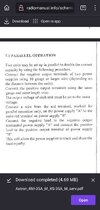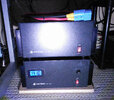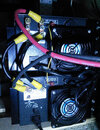Well ... I finally have THE answer, from Astron tech support nonetheless. I hooked up my supplies as per the last recommendation (ie. load on POS of one supply and NEG on the other). I was noticing some funky behavior between the two but was getting output. I hooked up a test load and all was well, but still funky. I decided to call Astron tech support and get a clarification. Fred instructed me in this fashion;
1. bridge the supplies; + to +, - to -
2. hook up load to + on PSU #1, - to PSU #2
3. hook up 20 gauge wire between the parallel connection posts.
Looks like the answer was not one or the other, but BOTH. Now that I think about it, this makes the most sense.
ok i agree with #1
i question only WHY regarding #2. if they are bridged, they are bridged. if you draw power from a common point-even a bus bar bridging via equal lengths of equal guage cable-i'm not sure what the difference would be. i've run batteries in parallel for many different applications over the last 35 years. never have i been told to take + from the 1st battery & - from the last. i've also run parallel power supplies since the 1970's & the same holds true. i've run power cables from a bus bar as well as from + & - of the same supply with no negative results.
as for #3, did the tech explain what that 20 guage wire is controlling internally on the astron PS?




